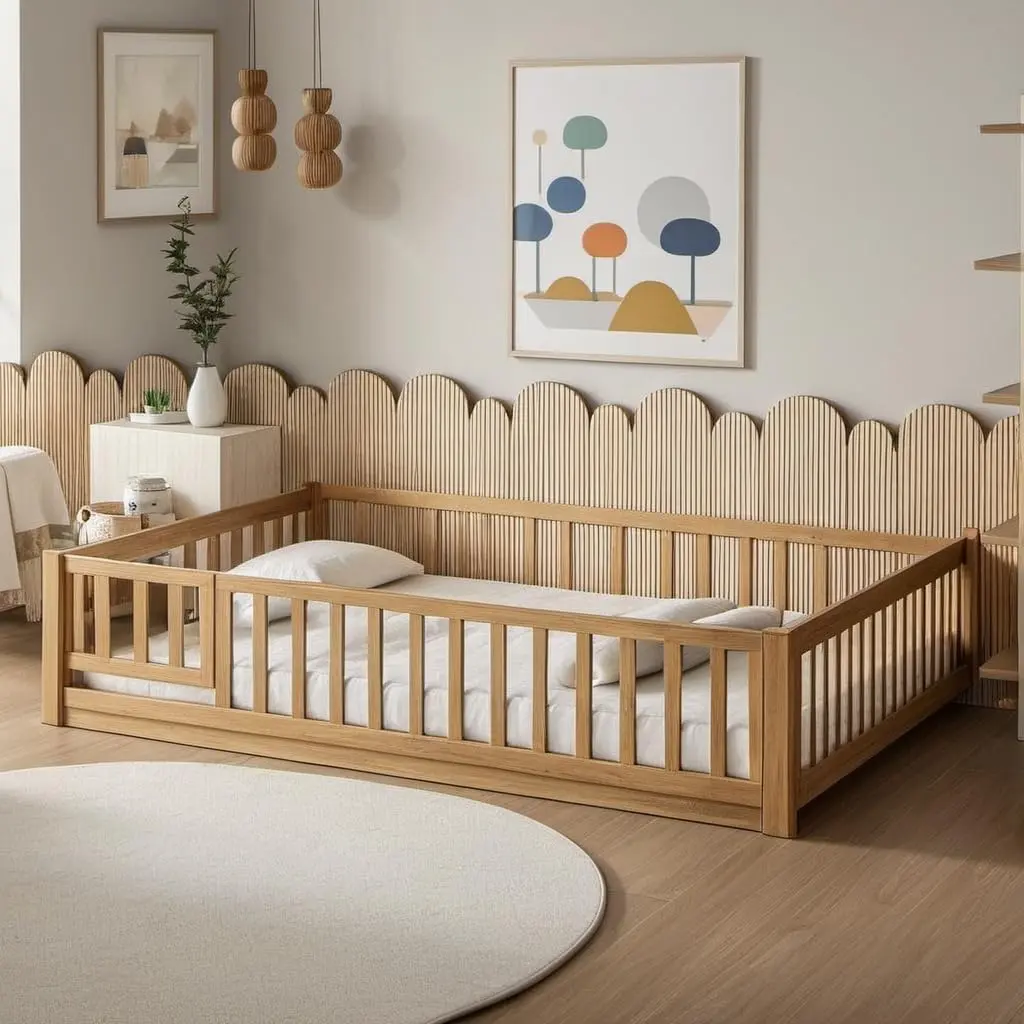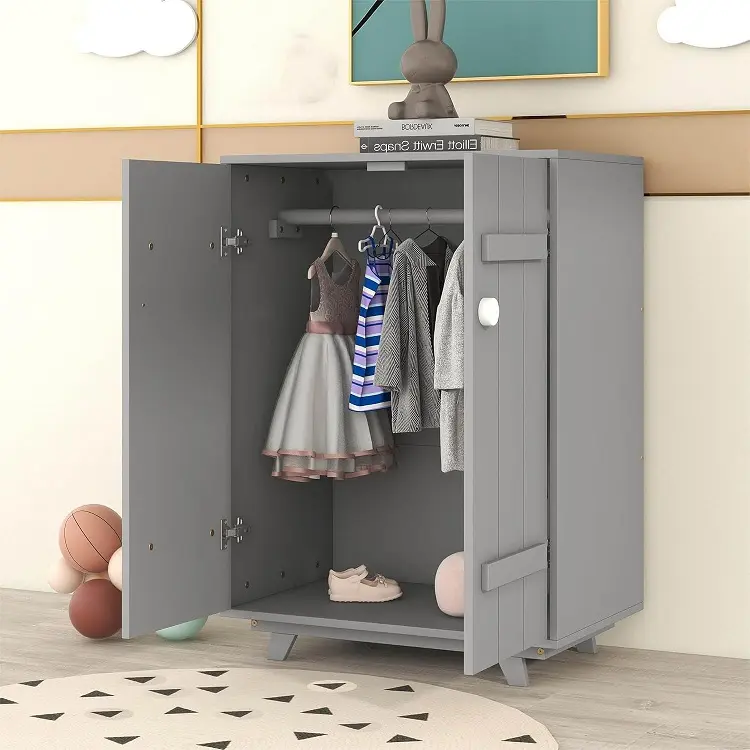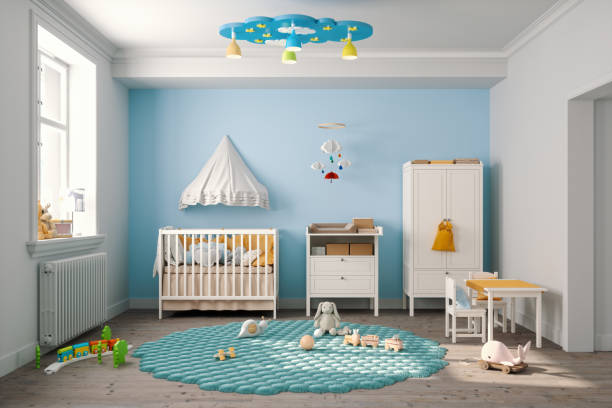Creating a safe nursery for your little one is a top priority for any parent. This article provides essential tips for creating a nursery room that's both beautiful and, above all, safe. We'll cover everything from crib safety to room design, ensuring a secure and comfortable space for your baby to sleep and play. These tips for creating a nursery will help you navigate the world of nursery safety and make informed decisions.
This guide is worth reading because it provides practical, actionable advice backed by expert knowledge and safety standards. We'll help you avoid common pitfalls and create a safe environment where your baby can thrive.
Is Your Crib a Safe Place for Your Baby?
The crib is the centerpiece of the nursery, and ensuring its safety is paramount. Crib safety has evolved significantly over the years, so it's crucial to be aware of current safety regulations and guidelines. Always check that your crib meets the safety standards set by organizations like the Consumer Product Safety Commission (CPSC) [^1].
Pay close attention to the crib's construction. The slats should be no more than 2.375 inches (6 cm) apart to prevent a baby's head from getting trapped. Ensure the crib doesn't have any missing or broken parts, and that the hardware is secure. Regularly inspect the crib for any wear and tear as your baby grows.

Consider the age of your baby when making crib choices. A crib with adjustable mattress heights is excellent, as it can lower the mattress as your baby learns to sit and stand, preventing them from trying to climb out. Always use a firm mattress that fits snugly within the crib frame. A crib mattress is one of the essential for your baby’s safe sleep environment.
How to Create a Safe Sleep Environment in the Nursery
A safe sleep environment is a fundamental element of a safe nursery. According to the American Academy of Pediatrics (AAP), the safest way for a baby to sleep is on their back on a firm mattress in a crib with nothing else in it [^2].
Avoid using pillows, bedding, bumper pads, and stuffed animals in the crib. These items can pose a choking hazard or suffocation risk. A sleep sack is a safe alternative to blankets. Ensure the baby’s head is clear and they are able to move comfortably.
Keep the crib away from windows and cords from blinds or curtains. Make sure the baby’s crib is not near cords from lamps or other electrical devices. Long cords can be a strangulation hazard. If you are using a baby monitor, keep the cord well out of your baby's reach.
What Safety Features Should a Changing Table Have?
The changing table is another area where nursery safety is important. Changing tables should have safety straps to secure your baby while you change their diaper. Always keep one hand on your baby during the process.
The changing table surface should be safe and easy to clean. Consider a changing table with a raised edge or a lip to prevent your baby from rolling off. Install the changing table on a safe surface. Also, keep all essential supplies – diapers, wipes, and creams – within arm's reach but out of the baby's reach to avoid them as a choking hazard.
Make sure the changing table is sturdy and stable. The changing table can also be incorporated into other nursery furniture like a dresser or storage unit to save space.
Choosing Non-Toxic Nursery Furniture and Decor
The air quality within the nursery room is extremely important for the environment for your baby. Opting for non-toxic nursery furniture is essential for your baby’s safety. Look for furniture made from solid wood or materials that have low volatile organic compounds (VOCs). VOCs are chemicals that can be released into the air and may be harmful.
When choosing furniture and decor, look for products that are labeled as "low-VOC" or "non-toxic." This goes for the mattress as well. Consider natural materials like organic cotton for bedding. Avoid furniture with sharp edges or corners; choose pieces with rounded edges to prevent falls.

Be mindful of paint and finishes. Choose paints and finishes that are non-toxic and low in VOCs. Air out the nursery well before your little one arrives to help eliminate any lingering odors.
How to Baby-Proof Your Nursery Room?
Baby-proofing your nursery room is a continuous process as your baby grows and becomes more mobile. This is one of the essential tips to make your nursery a safe space.
Install safety gates at the top and bottom of any stairs that lead to the baby’s room. Cover electrical outlets with safety plugs to prevent baby from inserting objects. Secure heavy furniture, like dressers and bookshelves, to the wall with anti-tip straps. Remove or secure any small objects that could be a choking hazard.
Secure or remove cords from blinds and curtains. If you have a window with a blind, ensure it is cord-free, or the cord is wrapped out of the baby's reach.
What are the Best Baby Monitors for Safety?
A baby monitor can provide peace of mind and help you keep an eye on your baby while they are sleeping. Choose a baby monitor with features that meet your needs.
Consider a baby monitor with a video component so you can see your baby. Make sure that you position the monitor cord safely away from your baby.
Many baby monitors also offer sound and movement detection. Some of the best ones also include temperature and humidity sensors to help you maintain an optimal sleep environment.
What Are the Tips for Creating a Safe Nursery Layout?
The nursery room layout plays a significant role in nursery safety and overall functionality. Place the crib away from windows, cords, and any potential hazards. Position the changing table in a well-lit area with easy access to supplies.
Organize the nursery to create clear pathways and avoid clutter. This not only enhances nursery safety but also makes it easier for you to navigate the room, especially during those late-night feedings and changes.

Make sure that you consider the layout as your baby grows, such as when your baby doesn’t need to sleep in a crib, or is big enough to use a two-step stool to reach the sink. Always ensure that you are able to keep the room as safe as possible.
Essential Tips for Air Quality and Ventilation
The air quality within your baby’s room is vital for their health and well-being. Adequate ventilation is essential. Ensure the nursery has good airflow by opening windows regularly, weather permitting, and by using an air purifier with a HEPA filter.
Avoid using air fresheners, scented candles, and other products that release VOCs. These products can contribute to poor air quality and may irritate your baby’s sensitive respiratory system. Regularly dust and vacuum the nursery to remove dust and allergens.
How to Prevent Falls in Your Baby's Room
Falls are a common safety concern as a child grows. As your baby becomes more mobile, take steps to prevent falls. Make sure you regularly check to see if the crib is in the proper position, or the mattress is at the correct height to prevent falls.
Always use a changing table that has a raised edge, or other features to prevent falls. Install safety gates at the top and bottom of stairs. Teach your child to try and be aware of their surroundings.
Additional Considerations for Nursery Safety
Beyond the basics, there are a few additional things to keep in mind when creating your safe nursery. Make sure that you check for the current safety standards and regulations for all of your baby products.
Keep medications and cleaning supplies securely locked away and out of your baby's reach. Regularly inspect all toys for any broken parts or small pieces that could be a choking hazard.
Be sure to read product reviews and check for any recalls on baby products from the Consumer Product Safety Commission.
Remember that your nursery is an exciting space for your baby. Make sure it is a safe space, so you can enjoy your little one.
- Quality Solid Wood Kids Furniture for lasting memories
- Kids Dress Up Storage with Mirror
- Wooden 2 Step Stools for Kids
Summary of Key Takeaways for Creating a Safe Nursery
- Prioritize crib safety by choosing a crib that meets current safety standards and has secure slats.
- Create a safe sleep environment by keeping the crib free of soft items like pillows, stuffed animals, and blankets. Always place your baby on their back to sleep.
- Baby-proof the nursery by installing safety gates, covering electrical outlets, and securing furniture to the wall.
- Choose non-toxic nursery furniture and decor to ensure good air quality.
- Maintain a clean and well-ventilated nursery to promote a healthy environment for your baby.
- Be aware of the baby’s safety as your baby grows.
- Consider the room design and make it as practical as possible, as a safe nursery for your little one is the most important part.
- Keep the baby’s room clean and a safe nursery.
- Follow the latest safety guidelines.
By following these tips for creating a safe nursery, you can create a loving and secure space where your baby can thrive. Remember that nursery safety is an ongoing process, so regularly assess your baby's nursery as your baby develops.
Post time: Feb-08-2025





